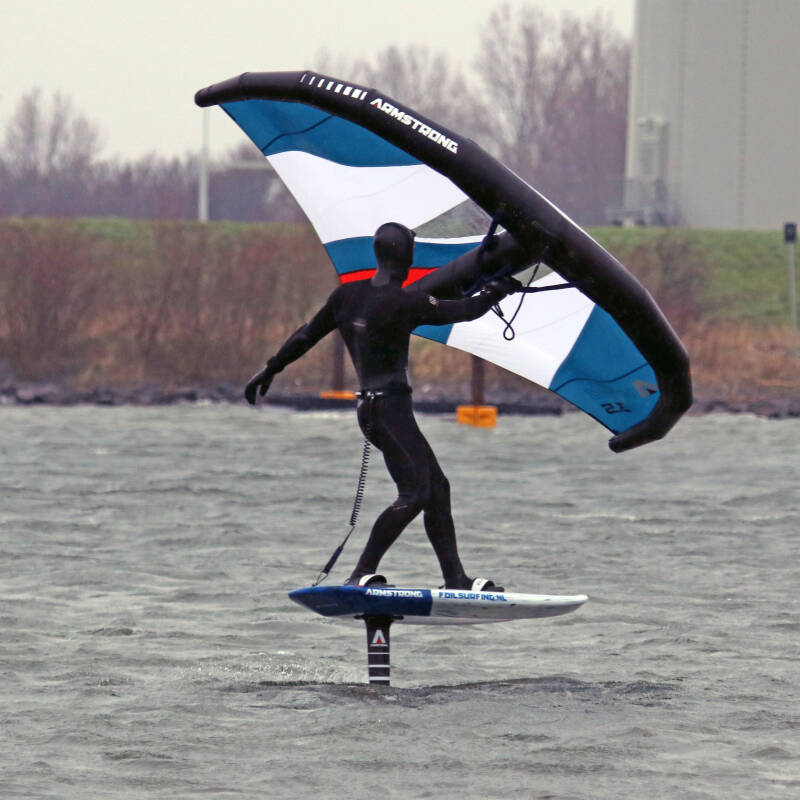When sailing switch stance (or toe side, how some call it), there will also be a moment at which you want to turn and go the other way. Although a switch gybe is very similar to a normal gybe, there are differences, the most obvious one is that you lean into the turn back side and can't really see where you are going.
Tips:
- Find a spot with flat water, no current and stable wind. The flatter the water, the easier it will be. Waves will increase your speed when going down wind so it will be harder to control the pitch.
- Take a bigger foil. This will keep you on the foil at slower speeds and normally the glide is a lot better too.
- Make sure you make a long drawn out turn. Snappy turns are harder. If you can, take a longer fuselage and/or bigger tail wing as this pushes out your turn.

Before initiating the turn, make sure you are aware what's around you. Look over your shoulder to ensure you are not cutting anyone's path.
Bear slightly downwind to increase your speed. You can also do this by pumping the wing.

Initiate the turn. Lean into the turn with your body, keeping it central over the board, in line with the foil.

Let go with your back hand. This will release the power from your wing. Focus purely on committing to the turn. The wind will ensure your wing keeps hovering. No need to pay any attention to that.
Keep the nose of the board up. You can do this by leaning back.

Drive your board through the turn. By dropping your inward shoulder this happens naturally. Look where you want to go. Your wing will follow.

The board now almost points fully down wind. Bring the wing closer to you by pulling in your arm.

With your free hand reach for the front handle. This wing has Y handles which make it very easy. You can reach for the opposite Y handle. You are now holding on to the wing with both hands. It is completely neutral, hovering, with still no power.

Let go with your other hand. Move the wing across from you. Pull in with your arm and bring it forward and above you. This will make it easier to reach for the back handles.

The wing is now above you. Grab the back handle with your free hand, still keeping your wing in a neutral position.
Your board has already completed the turn and is already going in the new direction.

Pull in with you back hand. This brings the wing upright and powers it up. You can pump a little to get more power if you are close to dropping of the foil.
Now you can focus on flying the board again.
